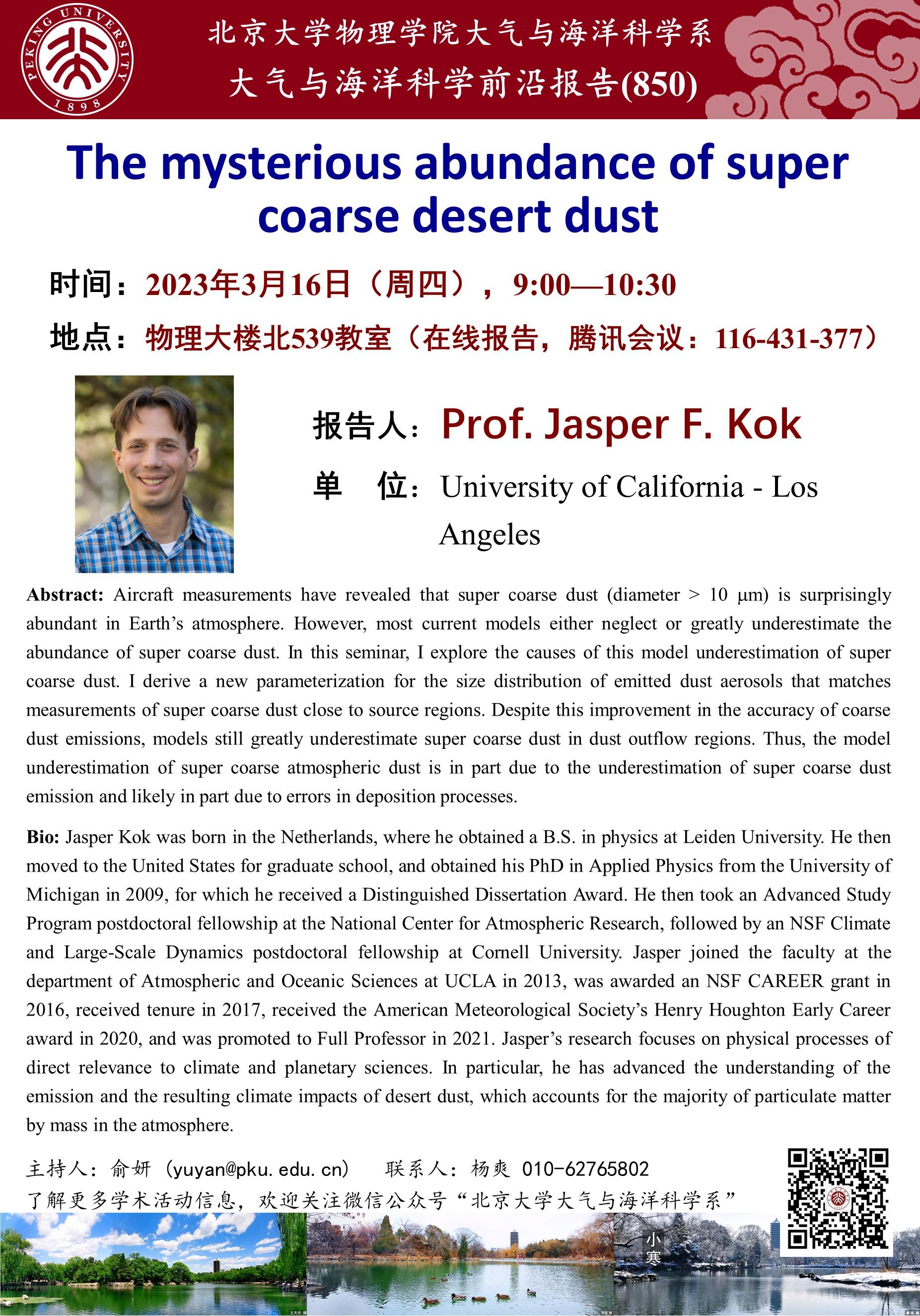Speaker: Prof. Jasper F. Kok, University of California-Los Angeles
Time: 9:00-10:30 am, March 16, 2023, GMT+8
Venue: Tecent Meeting ID: 116-431-377
Abstract:
Aircraft measurements have revealed that super coarse dust (diameter>10 μm) is surprisingly abundant in Earth's atmosphere. However, most current models either neglect or greatly underestimate the abundance of super coarse dust. In this seminar,I explore the causes of this model underestimation of super coarse dust. I derive a new parameterization for the size distribution of emitted dust aerosols that matches measurements of super coarse dust close to source regions. Despite this improvement in the accuracy of coarse dust emissions, models still greatly underestimate super coarse dust in dust outflow regions. Thus, the model underestimation of super coarse atmospheric dust is in part due to the underestimation of super coarse dust emission and likely in part due to errors in deposition processes.
Biography:
Jasper Kok was born in the Netherlands, where he obtained a B.S. in physics at Leiden University. He then moved to the United States for graduate school, and obtained his PhD in Applied Physics from the University of Michigan in 2009, for which he received a Distinguished Dissertation Award. He then took an Advanced Study Program postdoctoral fellowship at the National Center for Atmospheric Research, followed by an NSF Climate and Large-Scale Dynamics postdoctoral fellowship at Cornell University. Jasper joined the faculty at the department of Atmospheric and Oceanic Sciences at UCLA in 2013, was awarded an NSF CAREER grant in 2016, received tenure in 2017, received the American Meteorological Society’s Henry Houghton Early Career award in 2020, and was promoted to Full Professor in 2021. Jasper’s research focuses on physical processes of direct relevance to climate and planetary sciences. In particular, he has advanced the understanding of the emission and the resulting climate impacts of desert dust, which accounts for the majority of particulate matter by mass in the atmosphere.
Source: School of Physics
